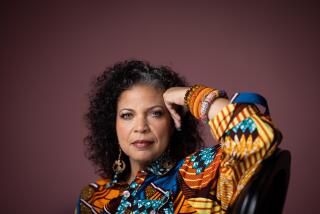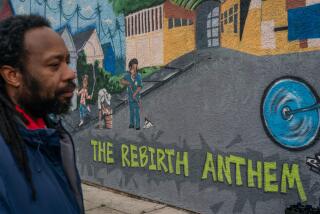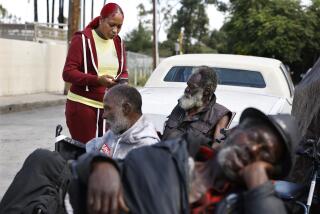‘89 Encores : On this last day of the year, and of the 1980s, the View staff pays a return visit to some of the people who made news in 1989. : A Community Effort
In an effort to reclaim a drug-infested Los Angeles block from dealers last spring, Latif Ali saturated the street with sign-carrying protesters chanting, “No more coke, no more crack! We’re taking our community back!”
The tactic worked. Most of the Harlem 30s Rolling Crips who controlled Rolland Curtis Place west of the Los Angeles Coliseum took their business elsewhere, as a July 19 story related.
The Los Angeles Police Department was delighted. “I was informed that at one time there were five rock houses on that block. Four of them are gone,” said LAPD Sgt. Edgar Payne. “There are fewer drug dealings, fewer shootings and fewer people congregating on sidewalks. I’ve gotten feedback from neighbors that they feel it’s better than it has been in 15 years.”
While monitoring the neighborhood to see that dealers do not return, Ali has taken his campaign elsewhere. Payne said marches by Ali’s group closed a rock house at 28th Street and Bronson Avenue. The group, Public Effort Against Criminal Environment (PEACE), also forced dealers on West Boulevard near Adams Boulevard to start selling during the day rather than the evening, cutting their profits.
Although Ali started picketing days and nights with groups of 30 to 60 men, women and children, he now takes only six to eight men and marches at night when drug dealing is more common.
“It’s too big of a risk to take 25 people,” he said. “If somebody were ambushed, Lord knows what could happen before someone realized they were gone. We also realized that eight men totally immersed in what they’re doing are far better than 80 men with lukewarm enthusiasm.”
Whichever method they are using, Ali’s groups have received police protection as they marched.
“It (the marches) has had a definite impact on open drug dealing on the street,” Payne said. “There should be more people getting involved in these types of marches. I think if they did, drug sales would obviously go down.”
More to Read
Sign up for Essential California
The most important California stories and recommendations in your inbox every morning.
You may occasionally receive promotional content from the Los Angeles Times.










